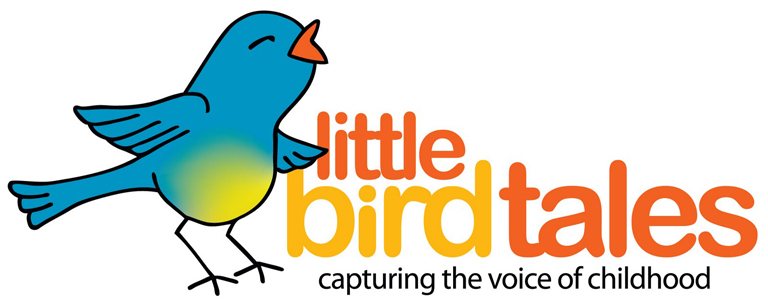Yesterday was Technology Friday (TF) in our classroom. For those not familiar with TF, I urge you to consider implementing it into your educational contexts. TF was created by the students in my class to help them better understand technology. After some negotiating, it was decided that we would set aside time every week to learn ways which we can use the different Information, Communication Learning Technologies (ICLT's) in our classroom.
At the moment we spend from 11:30am to 3:00pm experiencing how ICLT's can assist us in our daily classroom interactions. My students wanted a time where they could form understandings of the uses of the diverse range of ICLT's in the classroom. I took this as an opportunity to negotiate with my students such a time and begin to assist them in making ICLT's invisible in their interactions so they could focus more on their learning than the purpose of ICLT's such as iPads and laptops.
My respect for my students continues to grow as I experience their learning with them. I remember small flashes of when I was 5 years old. I was in no way as competent as my students are as digital citizens as they are now. Many adults enter our classroom and are confronted by the flexibility and diverse student directed learning that takes place. From afar it looks 'busy' and in a way 'un-organised.' This is true and I won't argue that fact. But upon closer inspection, my classroom reflects the learners who work within it, their diverse range of learning styles and ways of thinking.
I have worked hard to allow my students to create their own learning contexts. I won't lie, there have been times where everything was a second from falling apart, however, when your 5 years old, you are technically invincible and nothing is too hard. I have watched the way these brilliant learners negotiate how they want to learn and nine times out of ten, they can save themselves from what many would say is certain failure.
One of our latest projects during TF is our interactive display for our school library. We were required to create a piece for a school display that reflected our learnings about the life of "Catherine McAuley." It was suggested that each student draw a picture of Catherine. When I told my students what they were asked to do, they didn't fail me. Within seconds, a hand shot up into the air.
"Mr Hull, that's boring!" said a child. I laughed and asked this child what he would like to do. Before long we were brainstorming as a whole class on the electronic whiteboard what type of piece we were going to submit for the display.
My students wanted to create a interactive wall that had pictures and sounds that told those who looked at it why they liked Catherine McAuley. As my children always say "CHALLENGE ACCEPTED." I was a little intimidated by this challenge as I contemplated how much technology was going to be needed for such a task. My job was to facilitate the children's learning and that's what I did. I researched with the children if such a task had been done before. A long story short, we came across an app called AURASMA LITE (AL) for Apple and Android devices.
We spent a total of 3 weeks on our interactive wall, we learnt the best ways to record video on the iPad and iPhone. We looked at lighting and how to get the best sound. We looked at taking photos, how to make them clear and good quality. We also explored how to use AL in the classroom and how we could embed videos into photos we had taken (trust me when I say everything in our room has been augmented by this app).
After I had faclilited the children's investigations, it was time for them to apply what they had learned. I stood back and watched as the children negotiated what the wall would look like and what was required of each student for the piece to become a success. The steps the children negotiated were:
1. Draw a picture of Catherine McAuley.
2. Laminate the finished product. (Yes, my children use the laminator).
3. In pairs record a short video (5 - 10 seconds) of why they like Catherine Mcauley on the class iPad.
4. Check they everyone has recorded video.
5. Take a good photo of everyone's drawing.
6. In Pairs, use AL app to put the video onto our pictures.
7. Help each other save and view the videos.
8. Assemble the wall with everyone's drawing.
9. Test the wall display works.
10. Evaluate whether the challenge was a success of failure.

Ready for publishing
An example of a completed and laminated drawing ready for video.
Yesterday I joined my students in standing back and watching as the final picture was placed on the wall. It was one of those moments that if you had have walked in you would have seen 26, 5 year olds and their 21 year old teacher admiring their handiwork. As silence fell over the class, a girl picked up our iPad faced it at the wall and chose a picture to focus on. Suddenly a video bursts onto the screen of a child telling us why he liked Catherine McAuley. I laughed as one boy screams
"This is so.... Awesome!" To me and my 26 students this is a well deserved "MISSION ACCOMPLISHED!" As my students continue to play with the wall and watch their videos, I took the time to evaluate what we had learned and repeat how the children had negotiated and driven the learning in our classroom. They had capably turned a boring task into an interactive and attention grabbing display that shows the true ability of 5 year old learners.

The completed wall in the classroom
Our completed wall ready for transport to the library for installation.
Watching children owning their learning is a powerful thing. This is an experience that will remain in their memories because it was personal to them and relevant. As I sat down with the children we evaluated our experience (this is one of the most important parts of the process). We always look for things we can do better and things we would keep the same. The children also look for the next thing they can do with their new learned skills.
Here is a short example of one student testing out the class videos to assess whether the wall is ready to be completed. If you look closely you can see the picture she points at turn into a video of another child talking about Catherine McAuley.
Our next challenge they want to attempt is creating an interactive comic book that tells the story of the Nativity scene. As always I will facilitate them as they explore their capabilities as contemporary learners. But what I look forward to most is what I will learn from them.

Ready for publishing
An example of a completed and laminated drawing ready for video.
Yesterday I joined my students in standing back and watching as the final picture was placed on the wall. It was one of those moments that if you had have walked in you would have seen 26, 5 year olds and their 21 year old teacher admiring their handiwork. As silence fell over the class, a girl picked up our iPad faced it at the wall and chose a picture to focus on. Suddenly a video bursts onto the screen of a child telling us why he liked Catherine McAuley. I laughed as one boy screams
"This is so.... Awesome!" To me and my 26 students this is a well deserved "MISSION ACCOMPLISHED!" As my students continue to play with the wall and watch their videos, I took the time to evaluate what we had learned and repeat how the children had negotiated and driven the learning in our classroom. They had capably turned a boring task into an interactive and attention grabbing display that shows the true ability of 5 year old learners.

The completed wall in the classroom
Our completed wall ready for transport to the library for installation.
Watching children owning their learning is a powerful thing. This is an experience that will remain in their memories because it was personal to them and relevant. As I sat down with the children we evaluated our experience (this is one of the most important parts of the process). We always look for things we can do better and things we would keep the same. The children also look for the next thing they can do with their new learned skills.
Here is a short example of one student testing out the class videos to assess whether the wall is ready to be completed. If you look closely you can see the picture she points at turn into a video of another child talking about Catherine McAuley.
Our next challenge they want to attempt is creating an interactive comic book that tells the story of the Nativity scene. As always I will facilitate them as they explore their capabilities as contemporary learners. But what I look forward to most is what I will learn from them.




















